Magazine
Design incorporates objects, people,
ideas based on the small pleasures of everyday life.
Meet your Beautiful design world with the DDP Design Fair.
-
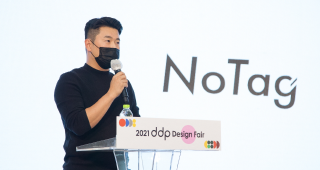
“Design , How to Sell?”
NoTag Korea CEO Woong ChoiWhat comes to your mind when you are asked the question “Where and how are you going to sell your design products?” One of the things many designers consider the most is product distribution. However, as a design major, most of them mainly focus on how to design things and do not think about how to distribute their products to customers. That’s why in many cases even well-designed products remain stacked in warehouses. In this regard, I would like to talk about the distribution of design, especially overseas distribution. In Korea, after designers, makers, or small and medium-sized enterprises create design products, they sign a contract with a trading company or a trading agency to sell their products. After signing the contract, a contract is made with an exclusive distributor for each country or region. The exclusive distributor supplies and exports the products to other wholesalers in the area, and the wholesalers supplies the products to retailers. This is how most consumer goods are exported. However, design products do not follow this kind of distribution structure. Therefore, when the advisors of KITA or KOTRA or general trading companies communicate with designers, in most cases, no progress is being made in the negotiations, and the project gets put on hold. In fact, the most common way was to showcase the company's products to large trade fairs such as Maison & Objet, meet with buyers across the globe, sign contracts with them to export its products. However, things have changed a lot over the recent two to three years since the outbreak of the COVID-19 pandemic. Many international fairs have disappeared from the calendar. Meanwhile, Maison & Objet has been hosting its virtual fair successfully for more than five years, way before the COVID-19 pandemic began. Thanks to its efficient operation, designers could sell their products through the online store, and buyers could place orders and view detailed information about the products. This allows designers to participate in the fair and meet buyers with a low fee. Over the last two years since the outbreak of the COVID-19 pandemic, there have been Korean companies selling design products and seeing high sales through various cross-border e-commerce platforms where designers themselves become export and distribution experts and make inroads into the global market. I recommend designers to start selling their products through these platforms to expand their global market share by twice to ten times. There are no intermediaries since designers themselves can sell and manage products on the platform. We are in the era where designers can find and leverage distribution channels as much as they put effort into design or product quality. We can say that this kind of system is more advantageous to young makers or designers who can quickly learn new technologies than small and medium-sized enterprises or large corporations.
2021-10-26228 -
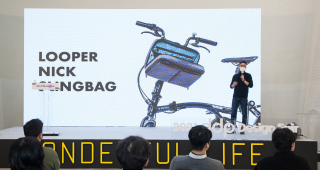
Besides products, what else do successful crowdfunding projects sell?
Looper CEO Yongwoo LeeDesigners have many thoughts about how to market their own products. I would like to talk about one of the methods, crowdfunding. I started a brand called Looper, and Looper is a brand for people who are trying to balance their work and personal lives through traveling. Looper is growing into a smart fashion brand as it combines design and technology to create fashion products and develops an application useful for traveling. Looper has always met its customers first through crowdfunding to launch a new product since its establishment. We have once raised about 300 million won through a global crowdfunding campaign, raising funds not only in Korea but also in the United States and Japan. Crowdfunding is a portmanteau of the words “crowd” and “funding”. Before unveiling our company’s product or the product I have developed, we try to deliver on our promises to backers by taking pre-orders to raise funds and shipping products to consumers when we reach the fundraising goal and also reward them by offering discounts and various reward benefits. There is a new market for crowdfunding. Target customers may change from when you initially planned and developed the product. Since crowdfunding platforms showcase new products that never existed before, people who are interested in new products — and especially those who like new technologies or products that are actually useful in real life — are lining up to become backers of crowdfunding projects. That’s why early adopters mainly participate in crowdfunding projects. They are also professionals with deep knowledge. Therefore, they are the main target customers, mostly in their twenties, thirties and forties. According to the statistics, crowdfunding platforms have more male subscribers than female subscribers. Looper has a lot of products for travelers. We thought about who will be most attracted to our product when it gets unveiled and concluded that they are expected to be people who like crowdfunding projects. We have been launching many products through Wadiz, the largest crowdfunding platform in Korea and have successfully crowdfunded over ten projects this way. Then, what is a good example of a product detail page?It is important to make a strong first impression. It would be great if you can come up with some catchy copy to grab attention. Even if the product detail page gets lengthy, you must include the actual product dimensions. To assure the quality, please make sure to list strengths of the product such as ingredients or patents without leaving out important information. It would be great if you can start marketing the crowdfunding campaign from two weeks to one month before its launch. In that way, customers will be informed about the crowdfunding campaign in advance, including when and where the product will be launched. I think it is very important to attract backers to your social media accounts or company website while running the crowdfunding campaign. If the product detail page is ready, shorten the URL using Bitly. The most important thing is to create an official website for your business. I recommend you to create videos with novice YouTube content creators to save more cost. Start the crowdfunding project after you have thoroughly prepared for it. I hope you get fully prepared for the marketing the crowdfunding campaign and achieve a great success.
2021-10-26210 -
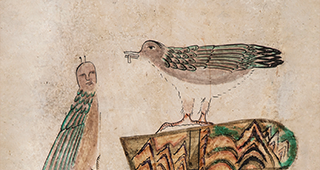
Korean-style Designs Truly Come from Excitement and Immersion
Mysterious world of beauty found in Hangeul and MinhwaWritten by Seyoung Lee (Graphic Designer, CEO of Gallery Joseon Minhwa)It takes a lot of effort and energy to create Korean-style designsIt is too one-dimensional to find and apply Korean-style iconography for Korean-style designs. This is something we do for design assignments. The way we live is Korean style, and the way we drink water is also Korean style. The way we live represents Korean style, but in general, Korean style refers to something traditional. However, tradition is embodied in images, icons, colors, lines and other things. It is important to pay careful attention to these small details. Korean-style designs can be expressed differently depending on each individual's perspective and taste. Instead of merely adopting a Korean-style image, being fully immersed in the work and taking pleasure in the work will be much more meaningful. Designers say they go to art galleries, museums, and libraries to get inspiration but I have a different point of view. Something Korean has nothing to do with Korean-style iconography. To draw something and achieve a result, you need to stay around the object and take pleasure in that. In the midst of that joy and excitement, you need to fully immerse yourself in something. Immersion does not merely mean sitting a long time in the same position and feeling focused. It requires a tremendous amount of effort. The results vary greatly. Creativity is about making something different from others. It takes a lot of effort and energy.Mysterious world of beauty found in Hangeul and MinhwaI think the most creative things in Korea are Hangeul, the Korean alphabet, and Minhwa, Korean folk art. It is because they are letters and drawings created with our own originality. Scholars of Jiphyeonjeon (Academy of Worthies, a royal research institute established by the Great King Sejong) initially opposed the introduction of Hangeul, and each letter was confined within a square block for over 500 years until recently. Even though King Sejong did not design each letter to be fit within a square block, Hangeul has been restrained for a long time. Minhwa was also looked down upon. Only literary paintings and royal court paintings were regarded as great art while Minhwa was classified as genre painting and was never treated as a painting. A man named Muneyoshi Yanagi from Japan introduced Minhwa by saying, “When you go to Joseon, there is a mysterious world of beauty.” This encouraged many Japanese people to come to Korea and buy folk paintings. The world of beauty that could not be seen in Japanese culture existed in Joseon. In fact, Korean-style beauty is not something you see in a museum. It is something already part of our daily lives. It is like a DNA that has continued passing through generations. Our passion will help us discover this beauty. We might discover art full of vibrant energy just by paying attention to the things we used to ignore.
2021-09-24382 -
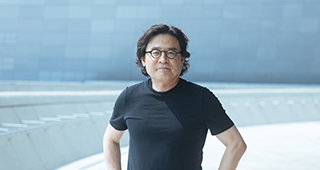
“A Good Design is about Doing Something Good”
Multidisciplinary thinking is required to visualize everyday items easily and simply in a playful wayWritten by Gilhyung Lee (2021 DDP Design Fair Chief Director)Communication is the evolution of media so what is important is which channel to use for delivering the experiential value based on the point of contact with consumers. It is also important to have a strategic communication that encourages a consumer’s behavior. The key elements of traditional analog communication were artistic, metaphor and conceptual while today’s communication is more about real, pataphor and experiential and intuitively moving one’s heart at once and bringing vivid imagination in front of us. It is necessary to have security codes and strategies that make the product’s invisible value visible and held in our hands. One of the ways to solve the consumer's lack of time, lack of interest and lack of trust in the digital age is to trigger a behavior based on intuition and create an experiential environment for consumers through technology.Nowadays, designers apply Design Thinking instead of their intention, adopt appropriate technology, explore sensory experiences as much as possible, reinterpret things that are thrown away, combine light, space and futuristic elements, pay attention to leisure activities, the pleasure of relaxing, shared values, multi-functions for mobility and transformation and visualize everyday items based on crisis and security codes easily and simply in a playful way to play a role as a curator with multidisciplinary thinking.The design in the era of the Fourth Industrial Revolution focuses on discovering the inconveniences in daily life based on the convergence of technology and humanity and solving problems from the user’s perspective. In addition, shared designs that add convenience and safety to our daily lives and offer a pleasant environment for everyone to realize the values of public design have been evolving into designs that solve social issues and lead a more sustainable life by going beyond the creation of new forms and objects to pursue a good and happy life and culture based on harmony and balance.One of the roles of design is to speak publicly on social issues and propose solutions in preparation for the post-COVID “new normal”. In other words, I believe that "A good design is about doing something good.”
2021-09-24487 -
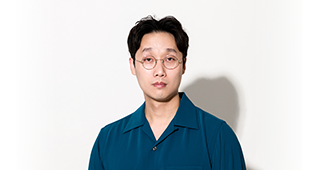
We Are Still Connected
On the Journey with Makers and Designers to Create Stories as the DDP Design Fair’s Lifestyle and Living CuratorAs the DDP Design Fair’s Lifestyle and Living Curator, I have been on the journey with makers and designers to create stories.Since the outbreak of the COVID-19 pandemic, many people started to talk about the importance of virtual world platforms and online content. Of course, it is true that such media experiences have become important but I can feel that people still value the sense of touching or feeling something in person by seeing the crowds at in-person exhibitions that offer great content. People are being more cautious when they are making purchases for lifestyle products, which are relatively more accessible and affordable, and try to make responsible consumption. Therefore, this is a perfect opportunity for designers and makers to launch lifestyle products — products we casually use every day — based on new interpretations. It is true that we had some difficulties along the journey because the Lifestyle and Living category has a broad and diverse range of products compared to other fields, however, we also had a meaningful time to discover the hidden stories of designers and makers.At this year’s DDP Design Fair, we are preparing to showcase lifestyle products with various stories just as we did last year but also trying to unveil more various content by encouraging collaboration between various designers and makers representing each material and color to make lifestyle products, furniture and lighting together based on a different approach. This was possible due to interdisciplinary communication between designers, makers and curators based on their expertise in each field.While acting as a bridge between designers and makers for this fair, I was grateful see their passionate efforts for collaboration, especially at a time when face-to-face meetings were mostly unavailable due to the COVID-19 pandemic. As a designer myself, I really envied the designers who were successfully paired with makers since they could collaborate with companies I’ve always wanted to work with. Especially, the makers and designers who have been participating almost every year felt like my close colleagues as we have been building the event together.I believe more and more people will start to realize the true value of the DDP Design Fair, which serves as a venue for collaboration between designers and makers for the first time. We must not expect too much at our first attempt. However, the value of each and every story we build together will shine through over time. The DDP Design Fair is not a fair that only lasts for a year. It is paving the way for the next 5 years and 10 years.
2021-09-05279 -
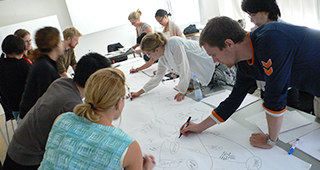
Design Support for the 21st Century: Design Collaboration Part 2
Principles of design collaboration and how to proceed with design auditsby Mario GagliardiDesign Collaboration instantly adds the power of design to the capabilities of a company - transparently, fairly, and with a long-term focus. Here are 5 principles to ensure successful cooperations:1: The Design Audit Finding the right fit between a designer and a company is a step where often mistakes are made. Sometimes, a designer is simply taken because somebody in the company happens to know one. Other times, a design company is chosen on the grounds of being famous, but their work style and expertise might not fit to the company and design project at hand. Sure, these approaches might work by chance, but more often they don’t.Every design project is different, so it is only partly helpful to deduce from a designer’s previous work how a future design will turn out. Instead, to find out if a designer is right for a project, conduct a design audit - see more about this below.After the audit, have a conversation to find out about interests and passions. Then let the designer make a presentation about his vision for your project and company (this is not about the design itself or how it will look like - you don’t want ideas for free - but about the designer's vision and approach). If the project at hand captures a designer’s heart and imagination, you will see it reflected in his presentation.2: Collaboration from Brief to LaunchIt often happens that companies do not know enough about design to use it to its full potential. Take the design brief, the start of each design development. In a conventional service relationship, the designer is given a brief by the client. For example, a company might tell a designer to design “something like” the product or brand of a competing company. But copying is not only unethical, it is also a strategic mistake - copies never help a company to achieve lasting success on the market. This brief is hence not in the best interest of the company, and it would need to be changed.In a Design Collaboration, the design brief is created collaboratively between company and designer. The designer is not a mere receiver of orders: instead, he has to learn about the capabilities, needs and visions of a company to come up with concepts which work. The collaborative brief pins down a schedule, process and envisioned result. During the design process, key ideas and milestones are shared and discussed with key people in the company. Finally, the designer helps with suggestions for production, promotion and product launch.3: Share Risk and Reward Will a design be a success on the market? Every new endeavor comes with risk. In a traditional service relationship, the designer is used as a service provider, and he company bears all the risk for the design being successful on the market. In a design cooperation, on the other hand, risk and reward are shared. The resulting design is offered on the marketplace mentioning both the company or brand name and the designers name, and the designer is mainly remunerated through a percentage of sales. That way, it is in the designer’s interest to do what he can to make the design successful on the market, and he will cooperate with production, marketing and sales to help with ideas and suggestions. That way, both company and designer profit.4: It’s Top Management BusinessIn successful companies, there is often a special relationship between design and CEOs. In the early years of Sony, Norio Ohga stablished a distinctive design and later became Sony’s President and Chairman. Steve Jobs of Apple had a great passion for design and spent a great amount of of his time discussing with his designers. Elon Musk takes design so serious that he personally leads all product design and engineering at Tesla.Design is a strategic resource to envision, to innovate, and to create compelling offerings. It must be concern of top management.5: Multi-modal and Transparent CommunicationGenuine cooperation requires understanding, trust and openness with everyone involved. A designer needs to understand every aspect of the design project, from top management strategy to shop-floor production issues. Therefore treat everybody as a partner, from the CEO to the shop floor worker. Always communicate openly and transparently, and present ideas in a multi-modal manner: visually, with sketches and renderings; in a haptic manner, with 3D models or material samples; and verbally, explaining the reasoning and story behind the design.6: Design does not stopDesign does not end when the designer stops working. Once a product or service enters the market, it enters a conversation with its customers. Consumers will interpret your offering as part of your brand and against the backdrop of competing offerings. Consumer feedback and consumer experiences must be fed back into the design process to iteratively innovate.Remember: Innovation almost never fails because of a lack of ideas, but because of a lack of persistence. Innovation must be a systemic capability, and design a core competence. It is not just about a new product or service: it is also about values, experiences, processes and networks.Designing Better Design Support In the course of previous design support programs, it happened that companies wanted support, but weren't actually willing to cooperate with a designer. Other companies found that in the midst of a consultation they can’t go forward because of a lack of budget. In another case, a company delayed production until after the support program ended, then produced the design with small alterations in order to cut out the designer.In order to avoid this kind of issues, a design cooperation support program should audit both designers and companies (more about a design audit below), then monitor design projects and their implementation by a company, regularly follow up both with designer and company, and go forward with defined milestones. Like in every partnership, also Design Collaboration only works when everybody involved behaves fairly and has a genuine intent to make it work.Conducting a Design AuditA design audit is conducted on the basis of the portfolio and CV of a designer and must be conducted by people with a solid knowledge of design. The audit analyzes along 5 axes of ability. As each ability is analyzed, candidates receive a point score from 0 to 6. The highest possible score is 30. Candidates with the highest score should go on to have a conversation and a vision presentation.Audit 1: InnovativenessInnovation is the lifeblood of new business. What is the degree of a designer’s innovative thought? Does the portfolio show conventional thought and pre-made templates, or does it include innovative approaches and interesting experiments? Analyzing the degree of novel thought of a designer helps you to gauge how innovative his work will be. Score scale: 0 for using pre-made templates, up to 3 for moderately original projects, 6 for highly innovative projects.Audit 2: StanceAn often overlooked, but important part is played by the stance of a designer. There are three general stances which I call copiers, egoists and altruists. Does the designer have a tendency to copy other designs, does he develop primarily his own design style, or is he developing distinctive designs for different clients? If the designer applies one style across all products and companies, his interest is more in developing himself than the clients he works for. The best designers always strive to develop the brand and image of a client company rather then their own.Score scale: 0 for copying, 1-2 for uni-style designers, 3-6 for a designer having developed a range of different successful designs for different clients.Audit 3: Skill SpectrumHow does the skill of the designer fit to the project at hand? Is the designer a specialist working in a narrow area or does he work across disciplines? The wider the spectrum of a designer, the better is the chance he will be able to deal with the complexity of consumer demands, company needs and market pressures and come up with appropriate solutions. However, if the skill fits the project, a designer who is great in a particular area is a better choice than a designer who does many things, but none of them particularly well. If you are looking to work not with a single designer, but a design team, pay special attention to cooperation readiness and skills complementing each other.Score scale: 0-1 for a narrow single discipline specialist, 2-3 for designers working across more than one design discipline (such as industrial design, graphic design, interactive design), 4-6 for a multi-disciplinary designer with additional experience in related disciplines such as business administration, engineering, marketing.Audit 4: Business ExperienceDoes the designer have experience with business processes, company dynamics and corporate structures? In large and medium-sized companies, corporate experience helps to understand the needs of a company, to navigate business processes and to bring a design to market in an effective manner. Ultimately, ideas need to be implemented, company departments need to be involved, and possible production, delivery and sales issues solved. In small companies with flat hierarchies, corporate experience is less important, but a good understanding of business processes is still vital for bringing a design to market.Score scale: 0 for no business experience, 1-2 for beginner experience and internships, 3-4 for experience in some projects, 5-6 for an extensive corporate and business experience. Audit 5: Cooperation ReadinessDid the designer cooperate with others or is he a “lone wolf”? Cooperation can be learned, and experience in cooperations for different projects helps to facilitate a successful design development process and overcome adversities. The work style of a designer is equally important: this can be more theoretical or more practical. Theorists without hands-on capabilities often have trouble in implementation. A solely hands-on approach, on the other hand, might lack the consideration required for a design project. Approaching design from both theoretical and practical viewpoints is most useful. Score scale: from 0 for poor cooperation readiness to 6 for a person with extensive cooperation experience, both theoretically and practically. Mario Gagliardi is principal of Mario Gagliardi Design, https://mariogagliardi.comHe was chief designer at LG Household and Health Care and consultant for KIDP, Samsung IDS, and the Austrian Ministry of Science. He was CEO at Qatar Foundation and taught as professor at Hongik IDAS and Aalborg University.
2021-08-23835 -
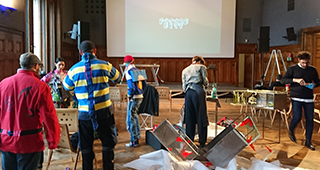
Design support for the 21st century: Design Collaboration Part 1
From hand-holding to startup financingMario Gagliardi is principal of Mario Gagliardi Design, https://mariogagliardi.comHe was chief designer at LG Household and Health Care and consultant for KIDP, Samsung IDS, and the Austrian Ministry of Science. He was CEO at Qatar Foundation and taught as professor at Hongik IDAS and Aalborg University.The history of design support until today has two distinct phases: project hand-holding and startup financing. From the nineteen-eighties until around the 2000’s, the economy revolved around industrial production, and a preferred model of design support was project hand-holding. In this model, a designer was brought together with a company for a project, and a part of the costs were financed. This worked well to raise awareness for design as a means to add value to companies. However, after the initial funding was completed, there was little follow-up, and the first project often remained the last.Around the 2000’s, the overall financialization of the economy led to a new model: to directly finance start-up teams through state investment agencies or investment aggregators. After the early years of excitement, it turned out that some freshly financed startup companies were unable to deliver their envisioned project. The incentive to get high amounts of funding, coupled with demands to become profitable in a very short timeframe, led several startups to exaggerate their claims. Some projects turned out to be mainly speculative, and problems in startup teams included lack of design competence, lack of product development experience, and difficulties with production and logistics. The hand-holding model suffered from a short-term focus and a lack of follow-up analysis, and short-term design jobs often suffer from a lack of engagement by designers. Also the startup model suffers from short-termism. In the startup model, companies are expected to quickly grow out of thin air: development, production, sales and logistics, all has to be built from scratch. The hand-holding model at least has the advantage that the wheel doesn't have to be reinvented: the company is already existing and has capabilities, and bringing designers in should add value.In search of a new conceptAfter the industrialization of the eighties and the financialization of the 2000’s, a new, more considered concept to support companies and advance growth is needed. New laws to reduce harmful ecological impact demand better resource utilization and options for recycling, and a new generation of consumers demands new standards of corporate transparency and resource traceability.SMEs thrive in specialized niches. There, design can help with creating innovative product and service concepts or with improving existing products, including ecological considerations and consumer trends.Which SMEs are successful, and why? Italian design producers such as Artemide, Alessi, or Zanotta are driven by passion and a long-term commitment to design. They provide meaning, pride and security for family members and employees, and they cooperate with a range of designers for their collections. Similarly, excelling medium sized German companies such as Festo or Durst base their strength in their commitment to innovation and technical excellence. None of these organizations exist to reap short-term profits: Instead, they have a long-term focus, cultivate innovation and are driven by an untiring motivation to excel.Design CollaborationAlready In the nineteen-sixties, car companies entered collaborations with designers, either because they lacked sufficient design capability, or the in-house team needed design inspiration. Designer Giorgetto Giugiaro created cars for Ferrari, Maserati, Alfa Romeo and others, while Giovanni Bertone designed cars for Lamborghini, Citroën, Fiat, Volvo and others. Design cooperations are also a successful model in fashion design: recent cooperations include Virgil Abloh for Off-White or Jil Sander for Uniglo.Design Collaboration can be a highly effective support model for SMEs because it instantly adds design capacity and experience which would be time-consuming and costly to establish in-house. To make it work, a range of points have to be considered. To be suitable for Design Collaboration, projects should have a shared vision and long-term development focus, keeping in mind that a new design offering can fundamentally improve the market position of a company. Design Collaboration is built on the premise that designers and companies treat each other as partners. To make sure of a good match between a designer and a company, a design audit looking at capabilities and motivation should be conducted. To maintain lasting motivation, designers should share risk and reward of product development by being remunerated through a percentage of revenues.Design Collaboration is ideally supervised by a design promotion organization which acts as catalyst, principal supporter and consulting partner of companies and designers, helping with audit, analysis, and match-making.Creative professionals are mostly educated to compete, but complex tasks can only be mastered through collaboration. A workshop bringing together specialists from architecture, design, engineering and resource management to create innovative concepts for sustainable communities in the Middle East, led by Mario GagliardiFuture City Collaboration ©Mario Gagliardi Design.
2021-08-23819 -
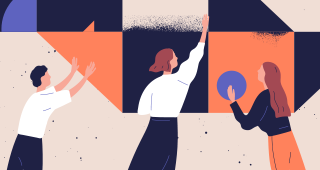
A Win-win Design Solution for Makers and Designers
Five benefits of a design based on a win-win partnershipWritten by Shin Kim (Design Columnist)Thanks to the successful cases of design in the 18th century, it is no exaggeration to say that the importance of design has grown even more in the 21st century. Then, what are the benefits of a win-win design solution for makers and designers?The first is having the original design. What played a decisive role in transforming Korea into an advanced country was the original model solely developed by companies. Korean conglomerates, which have now grown into global companies, used to serve as assembly plants for American, German, and Japanese products. The Pony, first produced in 1976, was Hyundai’s first production model. At that time, the Korean automobile industry lacked the ability to design cars, so Hyundai commissioned Italian designer Giorgetto Giugiaro to develop its first original model. Hyundai Motor’s legendary success story starts from the Pony, and it ranked 36th among the top 100 global brands and 5th among global automotive brands.AGO, a lighting brand based in Euljiro, was founded in 2019 to compensate for the lack of originality in the Korean lighting industry. CEO Woobok Lee, who distributed lighting products in Euljiro, and Hwasung Yoo, a designer based in Stockholm, came together to create a brand based on their strengths. AGO collaborated with Jinsik Kim and other local and international designers to produce a lighting product with originality and was selected as one of the winners of the Wallpaper Design Awards 2020 only after a year since its release.It is very important for makers to have their own design, even if it is not a product design. Even if you run a small store, the design of the store's signs, interior, business card and advertising materials enhances the credibility of your business. Nowadays, modern commercial spaces are rated and reviewed by Internet users and their reviews are open to the public. You should never forget that the evaluation criteria are based on not only the quality of the store’s products (whether it offers food or services like haircuts) but also the design of any visual element that draws attention. Even a maker’s small business becomes a brand when the product’s quality and characteristics, the quality of staff service and visual and physical designs are all combined together.The second is that design is not only responsible for the product’s appearance. Design is involved in the entire process of delivering a product to a consumer. Design includes everything from the development process and distribution of products to the store exposed to the public eye and the services it offers. Of course, one-off publicity and promotion events are also important elements of design. For example, when a person visits a retail store of one of the major mobile carriers, everything he or she experiences in that small space affects the brand image of that mobile carrier.The third is that the benefits of a win-win design solution also go to consumers. In the case of large and medium-sized companies, it is not easy to quickly adapt and respond to new trends due to their large volume of products. On the other hand, the products of small businesses run by a few people can adapt to the latest trends much faster. Of course, there are exceptions for IT-related products that require a certain period of time for development and huge investment. However, lifestyle products are suitable for this trend. Recently, we are seeing an explosion of interest and consumption towards interior and lifestyle products, especially among the young generation. They pursue more diversity of products. One of the greatest advantages of small businesses is that they are able to respond quickly to these changes of the time, and finding the right designer will lead to good results. This is a result of the diversity of market demands, which will eventually offer benefits to consumers.Lastly, there are benefits that go to designers. In the past, when makers needed design services, they usually looked for a signboard shop, a business card shop or a print shop which focused more on functions than design. As a result, products, printed promotional materials and signboards lacking aesthetic appeal were rampant across the country. However, nowadays, if you look around, you can see that such outdated designs are gradually disappearing. This means even small businesses are actively collaborating with designers. The job market is tough now, leaving fewer opportunities for young designers. In this case, there is no reason to find a job only at large companies. Collaborating with makers is more urgent than ever these days. This market will give designers another opportunity.As mentioned above, a win-win design solution for makers and designers benefits everyone. The key to enriching our economy and our lives is to encourage the collaboration between designers and makers, rather than large and medium-sized companies that are already ahead of the curve.
2021-08-04732





